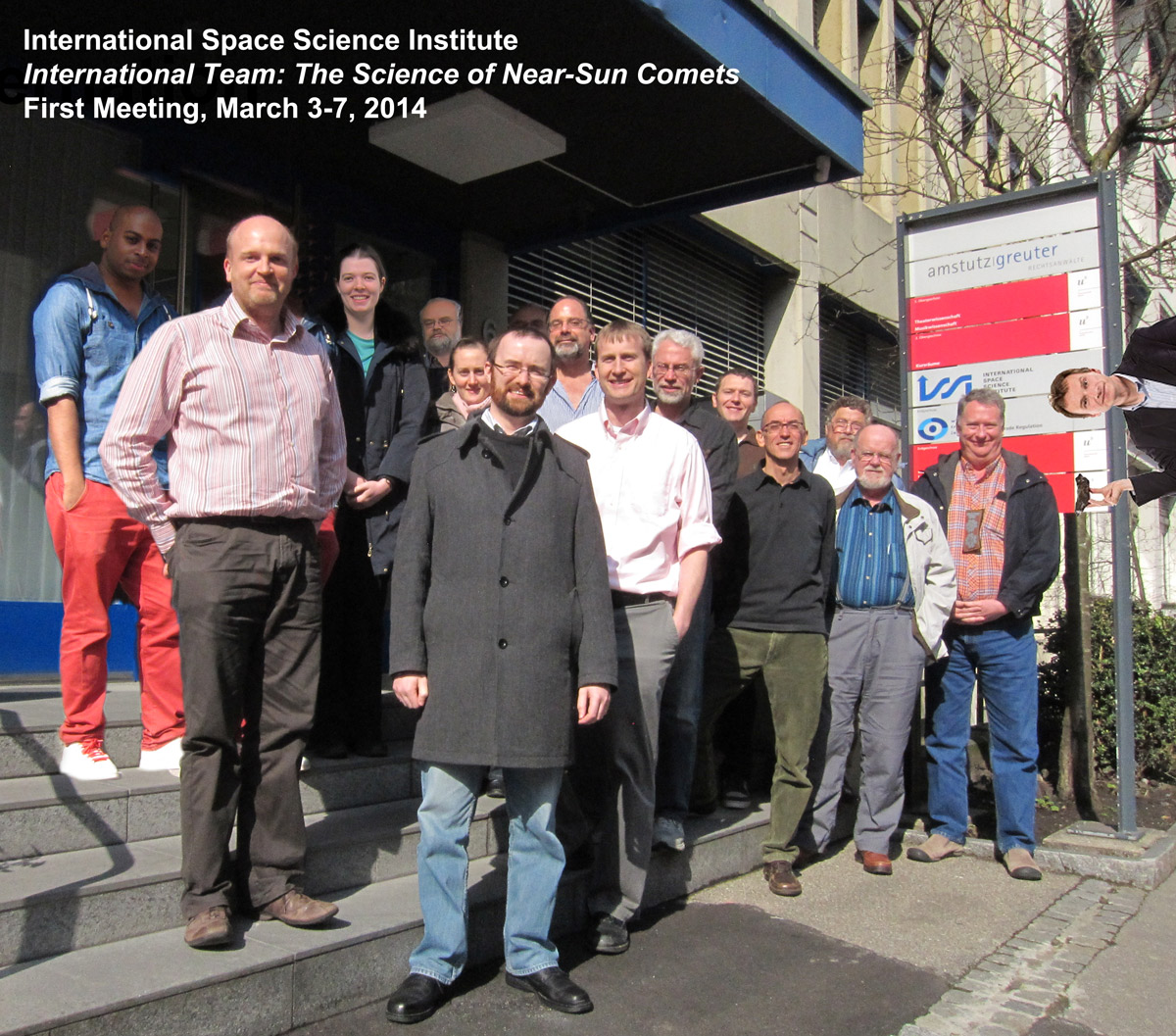


Monday, March 23 |
11:00-13:15 14:30-17:00 |
Opening Session Welcome (Jones) Overview of week's activities, initial plans (Jones) Brief
update on review paper progress
Introductory Talks I Weissman: The Rosetta Mission Knight & Battams: C/2015 D1 (SOHO) - A recent near-Sun comet. Battams: The orbit of Comet ISON - non-gravitational effects at perihelion Steckloff: Gas Leaks are Dangerous!!! How sublimating volatiles can push around, break up, and striate comets |
Tuesday, March 24 |
09:30-13:00 14:30-17:30 |
Introductory Talks II Fitzsimmons,
Snodgrass, & Knight: Sungrazer
observation prospects from ground-based
observatories.
Raymond: Exocomets as they relate to sungrazers Raymond & Giordano: Solar Orbiter Ly-alpha imaging of comets in the solar corona Birkett: Sodium tail modelling Opitom: Trappist monitoring of comet C/2012 S1(ISON) Boice: Physics and Chemistry of Near-Sun Comets II Brown: 1. Sun-plunging (low chromosphere) comet destruction (work with Bob Carlson) 2. Sun-skimmer (low corona) mass, momentum and energy loss and mechanisms of tail heating and ionisation Review Paper Writing Session I |
Wednesday, March 25 |
09:30-17:30 |
General Discussions and split into collaborative sub-groups as required Free morning or afternoon? (TBC) |
Thursday, March 26 |
09:30-17:30 |
Review Paper Writing Session II Collaborative sub-groups II |
Friday, March 27 |
09:30-14:00 |
Closing Session Review of progress. Final plans for review paper completion and submission. Plans for continued collaboration and publications. Discussion on date and locations of joint conference presentations, and potential sub-meetings at relevant conferences. End of Meeting
|
Monday, March 3 |
11:00-13:15 14:30-17:00 |
Opening Session Welcome (Jones) Introduction to ISSI (Falanga) Overview of week's activities, initial plans (Jones) Introductory
Talks I
Battams: Near-Sun Comet Observations from SOHO-LASCO and STEREO-SECCHI Giordano: UVCS Observations of Sungrazing Comets Raymond, McCauley: EUV and X-Ray Observations of Comet C/2011 W3 (Lovejoy) in the Lower Corona |
Tuesday, March 4 |
09:30-13:00 14:30-17:30 |
Introductory Talks II Weissman: Tidal Disruption of Rubble-Pile Nuclei in Sun-Grazing Orbits Brown: Comet interaction regimes in the inner solar atmosphere Boice: Coma Chemistry in the Near-Sun Environment Decock: The forbidden oxygen lines in a large sample of cometary spectra Birkett: Sodium Tails Snodgrass: Ground-based observations of Near-Sun Comets Jones, Ramanjooloo: Ion Tails of Near-Sun Comets |
Wednesday, March 5 |
09:30-17:30 Evening |
Plans for review paper General Discussions I Including: - physics of comet-Sun interactions (Brown) - full exploitation of solar datasets Team Dinner
|
Thursday, March 6 |
09:30-17:30 |
General Discussions II Including extended discussion on possible crossing of dust tail of C/2004 F4 (Bradfield) |
Friday, March 7 |
09:30-14:00 |
Closing Session Review of progress Plans for continued collaboration and publications. Discussion on date of next meeting, aims, and potential sub-meetings at relevant conferences. (Jones) End of Meeting
|